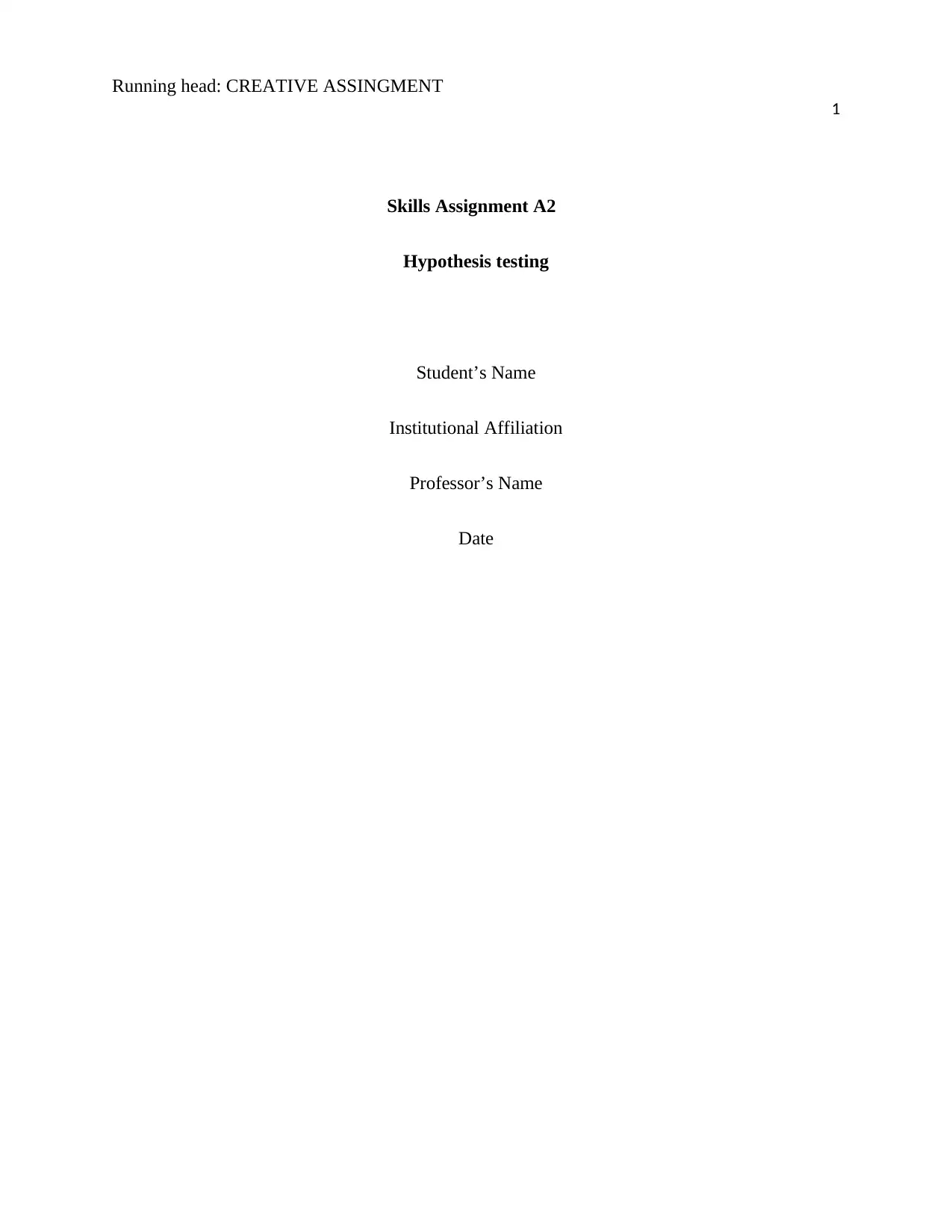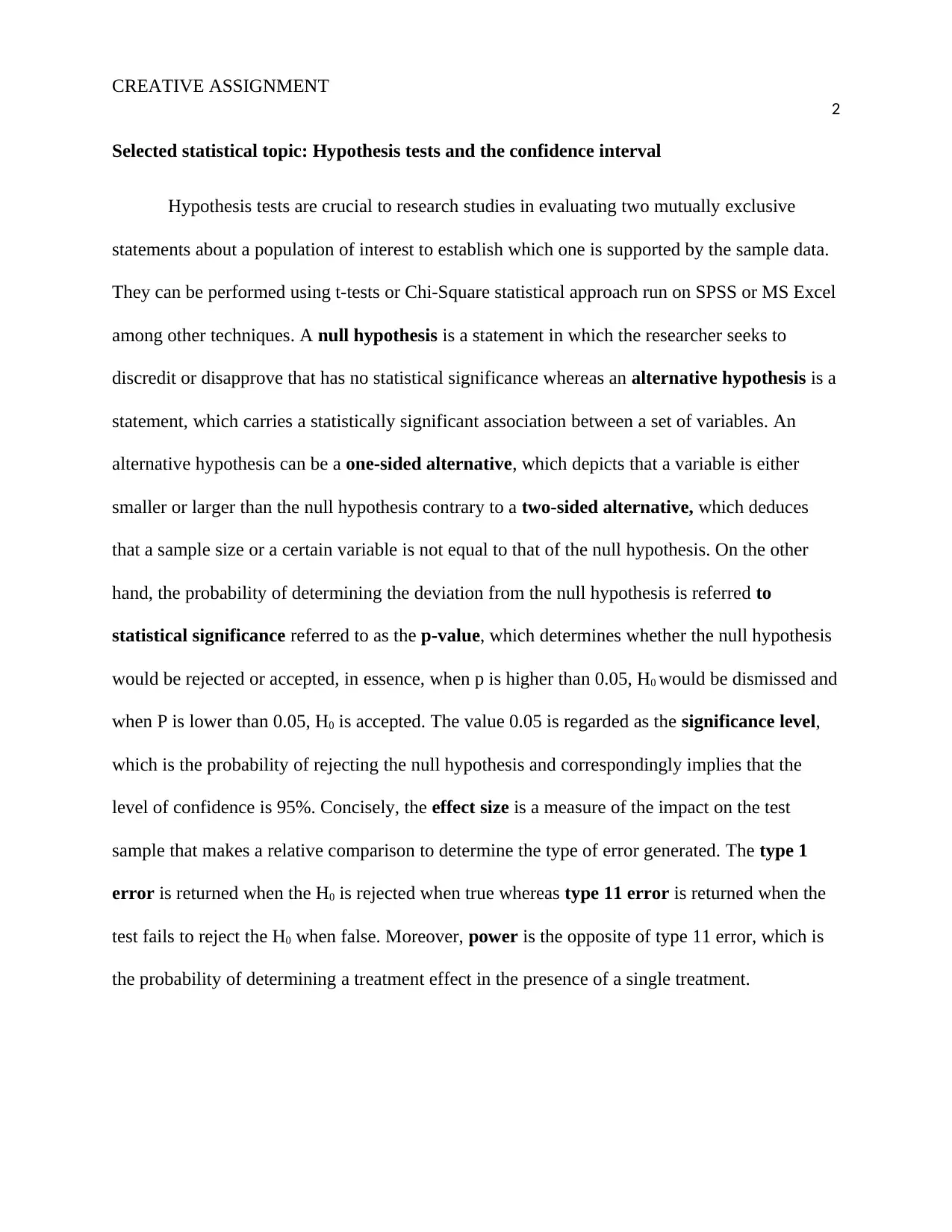Creative Assignment: Hypothesis Testing - Key Concepts Explained
VerifiedAdded on 2023/04/24
|2
|354
|210
Creative Assignment
AI Summary
This creative assignment focuses on explaining hypothesis testing and related concepts. It defines the null and alternative hypotheses, differentiating between one-sided and two-sided alternatives. The assignment also clarifies the concept of the p-value and its role in determining statistical significance. It further discusses the effect size and its importance in assessing the impact on the test sample. The explanation covers Type I and Type II errors, defining when each occurs in relation to accepting or rejecting the null hypothesis. Finally, the assignment defines significance level and power, providing a comprehensive overview of hypothesis testing within the context of statistical analysis. Desklib offers a wealth of similar solved assignments and past papers to aid students in their studies.
1 out of 2







![[object Object]](/_next/static/media/star-bottom.7253800d.svg)